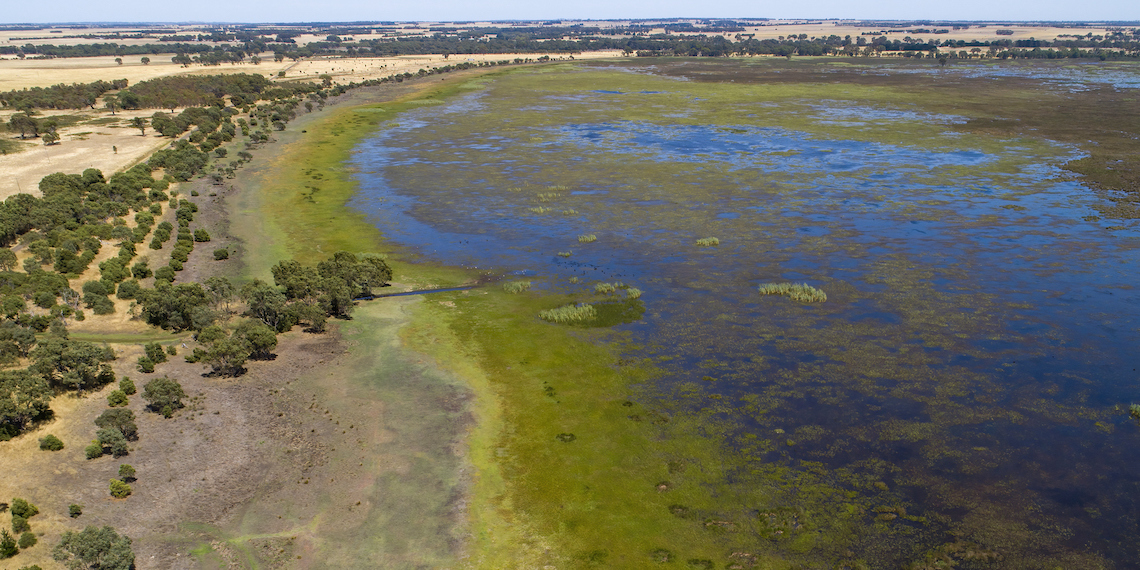Quantifying the effect of algal blooms on the water industry

New research into the economic impact of algal blooms will help Australian water utilities better understand the cost of monitoring and maintaining water quality in coming years.
Led by Dr Bojan Tamburic from the University of New South Wales’s Water Research Centre, the study is the first attempt in 20 years to gather data on the costs imposed on the water sector by harmful and nuisance algal blooms.
“In the last 25 years, the guidelines have changed. We now understand a lot more about the potential impact of toxic algae on human health; the monitoring requirements are much more strict, and the water treatment technologies have changed, as well,” Tamburic said.
“They’ve become more expensive; the capital expenditure has gone up. So we're interested to know whether we could do a similar study today and learn what the impact is on the water industry.”
Gathering this data, Tamburic hopes, will help the water community better prioritise the resources it devotes to nutrient monitoring, as well as determining which resources to use to manage blooms when they do occur.
This is because different water utilities face different problems with algal blooms. Tamburic’s research provides a road map guiding a range of responses rather than a single solution.
Issues big and small
“For urban water suppliers – and it doesn't matter the state – most of the big cities have alternative sources of water. There are several reservoirs that could feed Sydney or feed Melbourne, so the first option for the urban utilities is just to change their water supply,” he said.
“With regional water utilities, if they have a bloom in their water supply – and I only learned this through this project – their typical response is to cart water.
"It's not that they're going to shut down their drinking water treatment plant, they're going to send out lorries to somewhere further along the river or to a different water source and bring that water in and still run it through the same drinking water treatment plant to make sure they have no disruption of service.
“So for the regional water utilities, by far the dominant cost was the carting of water. It absolutely overshadowed any changes to water treatment costs or any changes to management programs.”
By contrast, the biggest cost for urban water utilities is capital expenditure on water treatment plant upgrades to deal with algae and other emerging contaminants.
“The best use of these results will be for a water utility to – in the future as they're collecting information on their operational activities – split their cost items into the boxes that we've identified,” Tamburic said.
“[If they] use our framework to break down their costs and monitor it over the next three to five years, they’ll really know where their issues are. Do they need more monitoring? Do they need less monitoring? Do they need to think about a capital upgrade, so they don't have to be carting water all the time?”
The research also found that 21% to 40% of Australian utilities' water quality concerns are due to problems related to algae and each bloom can result in eight to 15 hours of overtime work.
Collecting conundrum
One difficulty Tamburic encountered during the research was the scale of the data needed; it soon became apparent that estimating a national cost imposed by algae would be outside the scope of the project.
“What we quickly found was that nobody collects this data,” he said.
“There are big items within the [utilities’] balance sheets that cover algal blooms. But let's say it's a water treatment item – it's not just blooms; it's organic matter, it's all sorts of other contaminants.”
A different approach, it turns out, would be necessary.
“We designed a survey to go out to experts within the water industry that manage algal blooms on a regular basis, and to ask them ‘What is the impact on your business and on you as an individual? How much are you spending to treat the algal bloom? Is there overtime that comes into it? How often is this a problem?’,” Tamburic said.
“With that change of approach, the kind of outcomes that we could get from the study changed. Looking at individuals and how they're reporting their algae concerns made it very difficult to then come up with an estimate for the whole country.”



